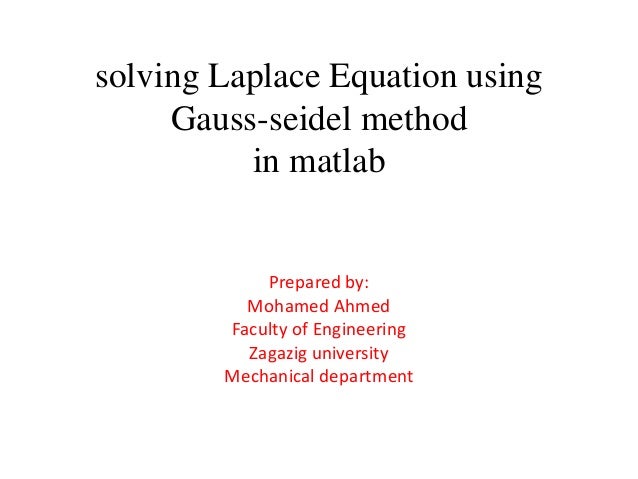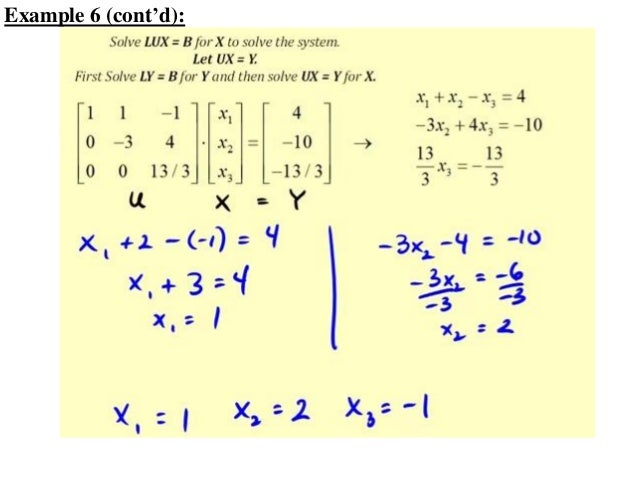

Then collect the x ( k+1) terms on the left hand side to get We can multiply both sides by matrix D and divide both sides by ω to rewrite this as

Notice that if ω = 1 then this is the Gauss-Seidel Method. The idea of the SOR Method is to iterateĪnd where generally 1 < ω < 2. As suggested above, it turns out that convergence x ( k) x of the sequence of approximate solutions to the true solution is often faster if we go beyond the standard Gauss-Seidel correction. Now think of this as the Gauss-Seidel correction ( x ( k+1) − x ( k)) GS. We can subtract x ( k) from both sides to get First, notice that we can write the Gauss-Seidel equation as Here is how we derive the SOR Method from the Gauss-Seidel Method. This direction is the vector x ( k+1) − x ( k), since x ( k+1) = x ( k) + ( x ( k+1) − x ( k)). If we assume that the direction from x ( k) to x ( k+1) is taking us closer, but not all the way, to the true solution x, then it would make sense to move in the same direction x ( k+1) − x ( k), but farther along that direction. Here is the idea:įor any iterative method, in finding x ( k+1) from x ( k), we move a certain amount in a particular direction from x ( k) to x ( k+1). What mistakes did I make? I think it is in TriSolve method since if I replaced it with regular LU solver such as (np.linalg.solve) it works.A third iterative method, called the Successive Overrelaxation (SOR) Method, is a generalization of and improvement on the Gauss-Seidel Method. Below is the same implementation in MATLAB which works: function x = gSeidel(A,B,N)

For some reason it is not converging even after 50000 iterations to the solution even when the matrix A is strict diagonal dominant. #O(n) per iteration, so overall O(nN), good for large SPD/SDD matricesĪ = np.array(,])Īns = is my Gauss-Seidel method in Python. From scipy.linalg import solve_triangular as triSolve


 0 kommentar(er)
0 kommentar(er)
